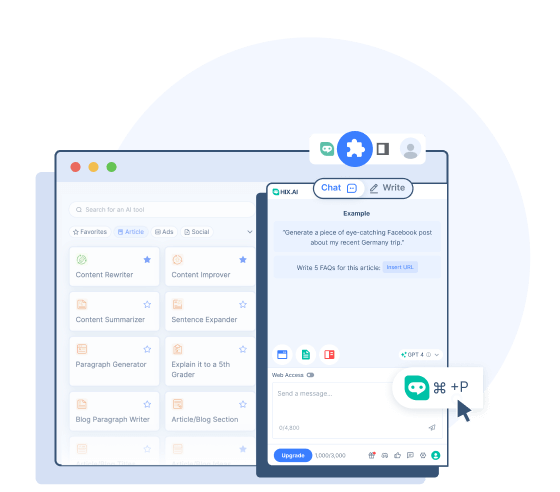Email endings don't really get much attention in the writing world, but they're actually more important than you think. They're the last thing your recipient will read and will leave them with a final flavor of your message.
Selecting the right ending can be the difference between receiving a reply and having your email ignored. It really is that important.
We're going to give the endings the treatment they deserve – and focus on endings from the start, middle, and end. We're going to explain the importance of email endings, provide 20 email ending examples (yes, there really are that many!), and show you how to use them correctly.
Perfect Your Email with a Better Ending
Are you uncertain how to properly end an email? Let our free AI email writer guide you to craft impactful email endings!
What are email endings (and why do they matter)?
We're going to assume you're already writing emails. What email endings do you use?
Most of us find an ending that we're comfortable with and add it to the end of every email we send. Take a look at yours and see if you can spot a pattern!
Obviously, we often use several email endings for different situations. We can roughly split these into two email categories:
- Personal emails – These are the messages you send to friends, family, trusted colleagues, and other non-professionals.
- Professional emails – These are emails sent to clients, customers, business stakeholders, managers, bosses, and directors. You'll also use them when applying for a job, engaging with other professionals, and when others may read your emails (like when you make a complaint).
When writing emails, it's critical that you find an appropriate email ending that's relevant to the context. How? Let's start with some email ending samples.
20 unique email closings – what they are and when to use them
We've covered the theory; now it's time to get into the practical! Here are 20 common email closings explaining what they are and when it's appropriate to use them.
- Best: This is a classic, safe, and universally acceptable sign-off. It's a great choice for semi-formal or informal emails, but it may not be suitable for emails to directors or high-profile clients. (Personal and professional)
- Kind regards: This is an increasingly popular way to end an email. "Kind regards" is a great alternative to more formal endings like "Yours sincerely." (Personal and professional)
- Look forward to hearing from you: This is used when you're expecting a response, like a meeting request or sharing a proposal. It encourages the reader to get in touch and not ignore the email. Use it when you're pushing for a response. (Personal and professional)
- Sincerely: This is a formal and (if we're honest) old-fashioned email ending. It's not really used anymore, but it wouldn't feel out of place at the end of a formal message to a professional (doctor, professor, lawyer, etc.). (Professional)
- Yours: A bit like "Sincerely" above, "Yours" is old-fashioned and outdated. Our advice is to find an alternative. (Professional – but sparingly)
- Yours sincerely: This (and the example ending below) come from a time of formal letter writing. It's OK if you're messaging professionally (send an RSVP to a wedding, for example). (Professional – but sparingly)
- Yours faithfully: In traditional letter writing, this is the way to end a letter to someone you don't know. Like VHS and landline phones, it's best left to the past. (Professional – but sparingly)
- Cheers: This is a super-informal email ending you might want to use in a party invite or to a firm friend. It's pretty laid-back. (100% Personal)
- Thanks: The old favorite! "Thanks" is a simple and universally accepted way to express gratitude, and it's used in other languages too. (Personal and professional)
- Thanks in advance: This ending is also an instruction. It says "message me back when you've done what I asked". You can use this with your friends, but they may expect something a little less formal. (Personal and professional)
- Many thanks: This is a pretty anonymous ending, but it's effective in all settings. (Personal and professional)
- Regards: Ye, here's another safe and universally accepted sign-off you can safely use in any type of email. (Personal and professional)
- Yours truly: This is a beautiful and romantic way to end your emails, and it's probably best left alone. ((Personal and professional, but we wouldn't use it at all)
- Respectfully: Does anyone use this? It seems they do, but it's an odd one. It's neither warm and friendly or formal. Avoid. (Personal and professional)
- Best regards: We like this one. It's a variation on the "Kind regards", and can be used in the same context. (Personal and professional)
- Warm regards: Like "Best regards" above, we like it. Add it to your ending arsenal. (Personal and professional)
- Best wishes: This is a kind and positive ending you'll often see on emails between friends. (Personal and professional if you know the person)
- Let me know your thoughts: If you're asking someone's opinion or view, this is a good ending. It tells them they'll be listened to and that you're open. (Personal and professional)
- Are you interested?: This is a specialized ending you might use when sending a proposal, meeting request, or offer to a person.
- Want to chat?: Like the example above, this is used to push for an interaction. You're putting the ball in their court and asking (but not demanding) a reply. We like it. (Personal and professional)
HIX Email WriterWrite/Reply to Emails Instantly
Type // to draft emails in no time
Get tailored replies with one click
Quickly summarize a received email
How to end an email with a suitable email ending
We've (hopefully) made it as easy as possible to select a suitable ending here. You can simply run down the list and find one that fits.
When making your decision, here are 5 things to consider:
- Do you know the person well? If so, then you can use any ending!
- Are you emailing someone in power or a position of authority? Go for a formal ending to avoid any issues.
- Is your email subject or context sensitive? Go for a professional ending.
- Are you pushing for an outcome? Use an active ending like "Want to chat?, or "Look forward to hearing from you".
- Do you live in the 21st Century? If so, avoid old-fashioned endings like "Yours sincerely" or "Yours truly," as they're just outdated and old.
Another useful trick is to read through the email and say your ending out loud. How does it sound? If it sounds OK, it probably is OK – so go with it. If not, then use our list above and select an alternative.
Conclusion
Thanks for reading to the end of this email ending guide.
Kind regards,
See, it really is as simple as this to find an appropriate email ending and use it. The trick to finding a suitable ending is to understand the audience (personal or professional) and write for them. If you're unable to find the right words, try HIX.AI's email generator. This intelligent, AI-powered email writing assistant can craft effective emails (including endings) in seconds, leaving you to get on with the job of doing your job. Try it today.



